How to Cook a Ribeye
How to Cook a Ribeye: Complete Guide to Rich Flavor and Perfect Texture
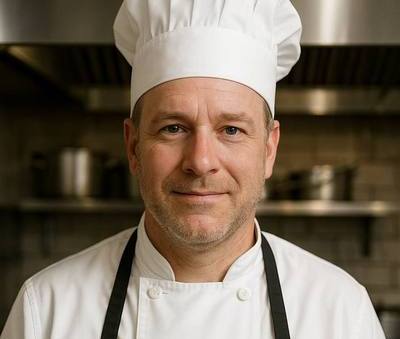
If I could only choose one cut of beef for the rest of my life, it would be the ribeye. As a chef, I’ve cooked thousands of steaks, and none strike the perfect balance of flavor, fat, and tenderness quite like this one. Ribeye has everything: rich marbling that melts into the meat, a luxurious texture that remains juicy even if slightly overcooked, and a bold beefy flavor that doesn’t need much help to shine.
- Why Ribeye Is the King of Steaks
- What Is a Ribeye and How It’s Cut
- Choosing the Best Ribeye at the Butcher Counter
- Preparing Ribeye for Cooking
- Essential Ingredients for Ribeye Cooking
- Skillet Cooking for Ribeye: Building Crust and Flavor
- Oven-Finished Ribeye: For Thick or Bone-In Cuts
- Temperature Guide and Doneness Table for Ribeye
- Reverse Sear for Ribeye: Maximum Control
- Sous Vide Ribeye for Precision and Ease
- Pressure Cooker and Microwave Ribeye Options
- Common Mistakes When Cooking Ribeye
- Sauces and Butters for Ribeye Steak
- Best Seasoning Approaches for Ribeye
- Recipe Variations Using Ribeye
- Serving and Plating Ribeye Like a Pro
- FAQ: 15 Questions About Cooking Ribeye — Answered by a Chef
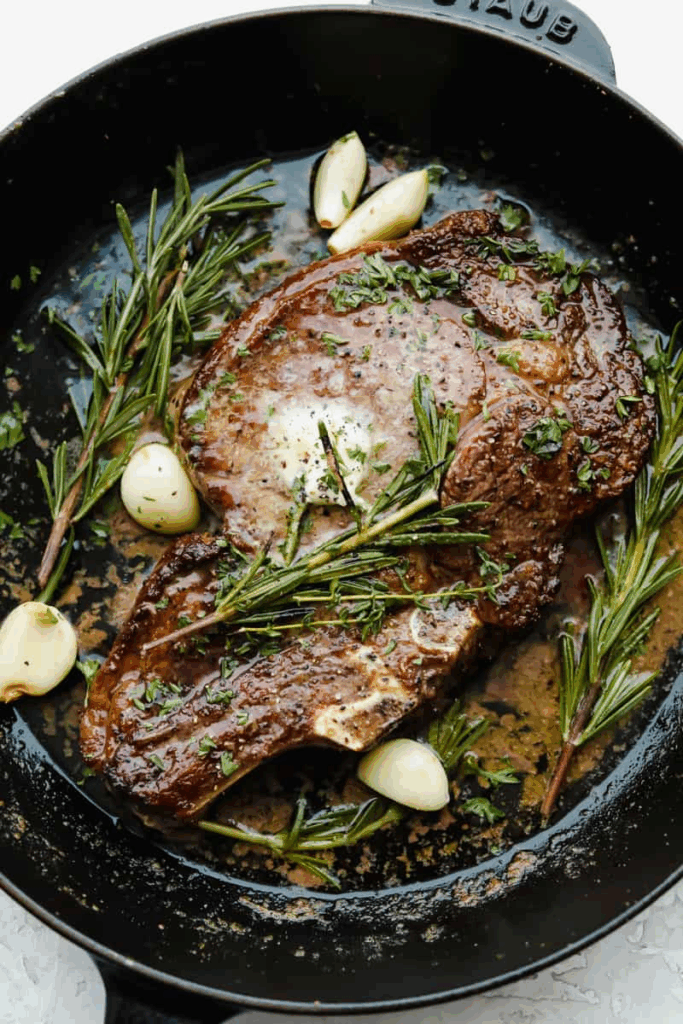
Why Ribeye Is the King of Steaks
The ribeye is also one of the most forgiving cuts for beginners. Its fat content protects it from drying out, and it responds well to almost every cooking method—from cast iron to sous vide. Whether you’re aiming for a hard sear, a gentle roast, or something in between, this steak delivers every time. In this guide, I’ll show you exactly how to get the most out of it, from butcher counter to final plating.
What Is a Ribeye and How It’s Cut
The ribeye comes from the rib section of the cow—specifically the longissimus dorsi muscle, which runs along the back. This part of the animal does very little work, which is why the meat is so tender. What makes ribeye unique is the generous intermuscular fat known as marbling. When cooked properly, this fat renders into the steak, creating juicy, flavorful bites from edge to center.
You’ll find boneless and bone-in ribeyes. The boneless version is easier to manage on the skillet or grill, but the bone-in version (often called a “cowboy steak”) adds depth of flavor and a striking visual on the plate. Then there’s the ribeye cap—called the spinalis dorsi—which many chefs, including myself, consider the most flavorful piece of meat on the cow. It’s the outer crescent-shaped section, and if you can find it as a separate cut, you’re in for something truly special.
Understanding these parts helps you cook smarter. The eye cooks faster than the cap, and the bone slows down heat transfer. That’s why I use different searing and resting techniques depending on which part I’m working with.

Choosing the Best Ribeye at the Butcher Counter
Shopping for a ribeye is where the cooking process truly begins. I always start with marbling—thin, white streaks of fat woven throughout the muscle. The more marbling, the more flavor and moisture retention during cooking. I look for USDA Prime when possible, but Choice grade ribeye can also be excellent if the marbling is even and abundant.
Thickness is crucial. I recommend at least 1¼ to 1½ inches thick. Anything thinner cooks too quickly and leaves no room for crust development. I avoid pre-packaged steaks that are overly wet or trimmed too aggressively—especially if the cap has been removed or the fat cap is too small.
I also check the fat cap and connective tissue. A good ribeye should have a bit of creamy, opaque fat around the edge and minimal sinew inside. I gently press the meat with my finger—if it’s too soft or springy, it may be low quality or overly aged.
If I have the option, I always ask the butcher to cut fresh from the roast. That way I get the thickness I want, and I can choose my own section—usually from the center of the rib primal where the eye and cap are most balanced.
Preparing Ribeye for Cooking
Preparation can make or break your final result. The first thing I always do—whether in a restaurant or at home—is let the steak rest at room temperature for 30–45 minutes before cooking. Cold meat seizes in a hot pan and leads to uneven doneness. Warming it slightly ensures the interior cooks more evenly from edge to center.
Next, I pat the steak completely dry with paper towels. This step is essential. Moisture on the surface interferes with the Maillard reaction—the browning that builds flavor and crust. Once the surface is dry, I trim any excess hard fat or silver skin, but I leave most of the fat cap intact. That’s where so much of the steak’s character comes from.
I season generously with kosher salt and freshly ground black pepper. For thick steaks, I apply seasoning on all sides, including the fat edge. I let the salt sit on the surface for at least 15 minutes before the steak touches any heat. This begins the dry brine process and helps form the crust I’m after.
If I plan to use butter or aromatics like rosemary and garlic, I set those aside to add during the last moments of cooking. I don’t add oil to the steak—only to the pan right before searing.
Essential Ingredients for Ribeye Cooking
(List format allowed in this section only)
- 1 thick-cut ribeye steak (1¼ to 1½ inches, bone-in or boneless)
- Kosher salt
- Freshly ground black pepper
- 1 tablespoon neutral oil (grapeseed, avocado, or canola)
- 1 tablespoon unsalted butter
- 1 sprig fresh rosemary or thyme (optional)
- 1–2 cloves garlic, smashed (optional)
- Optional: red wine or stock for pan sauce, mustard for crust variation
This core set of ingredients gives me everything I need to build a perfect sear, rich internal texture, and finish with layered flavor. Additions like compound butters or glazes are great later—but ribeye shines brightest when it’s kept simple and honest.
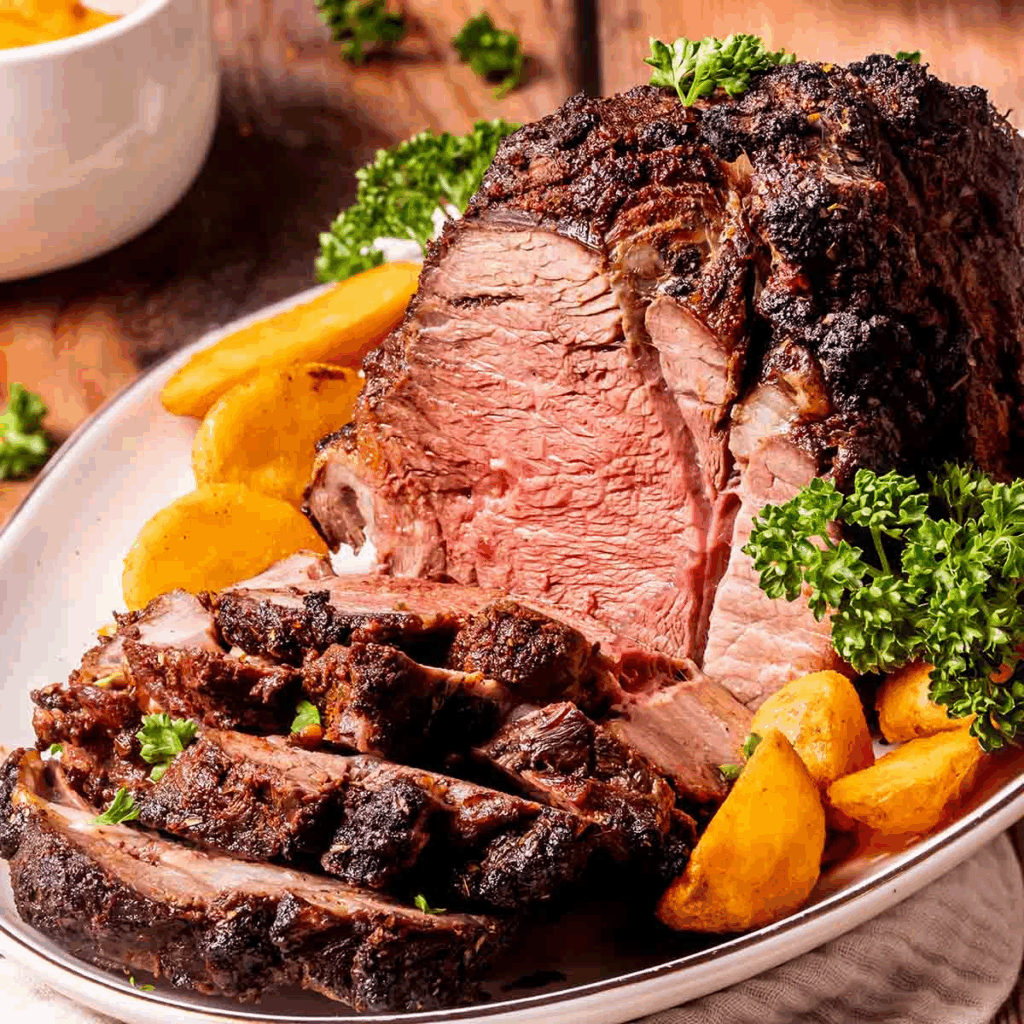
Skillet Cooking for Ribeye: Building Crust and Flavor
When I want maximum crust and fast flavor, I go straight to a cast-iron skillet. This method delivers that classic steakhouse sear with rich browning and buttery depth. I preheat the pan over medium-high heat until it’s almost smoking—don’t rush this. A properly preheated pan is key to caramelization.
Once hot, I add a bit of neutral oil and lay the steak in the pan away from me. For a 1½-inch thick ribeye, I sear it undisturbed for about 2½ to 3 minutes per side. I’m not chasing color alone—I’m listening for that steady, even sizzle and watching for the edges to crisp.
After flipping, I reduce the heat slightly and add butter, garlic, and rosemary to the pan. I tilt it and begin basting, spooning the sizzling butter over the steak repeatedly. This infuses the fat cap with herbaceous flavor and helps the crust caramelize without drying the interior.
As soon as the internal temperature hits 125°F (52°C), I pull the steak and let it rest for 10 minutes. The carryover takes it perfectly to medium-rare. It’s rich, juicy, and full of texture—from the crusted edge to the fatty cap.
Oven-Finished Ribeye: For Thick or Bone-In Cuts
When I’m working with bone-in ribeye or anything thicker than 1½ inches, I often combine skillet and oven. I start by searing both sides in a hot pan for 2 minutes per side, then transfer the steak—pan and all—into a preheated oven at 375°F (190°C).
Inside the oven, the heat surrounds the steak and gently cooks it through. I use this method when I want less crust and more even pink interior. After about 5 to 7 minutes, depending on thickness, I temp the center. Once it reads 125°F, I pull and rest.
Sometimes, I’ll finish with a glaze—mustard, brown sugar, or balsamic reduction—brushed on during the last minute of oven time. This adds a flavorful crust without compromising the beef. I’ve also used this method during high-volume service when I need multiple steaks finishing at once.
It’s reliable, controlled, and makes ribeye feel like a refined main course without sacrificing the bold richness it’s known for.
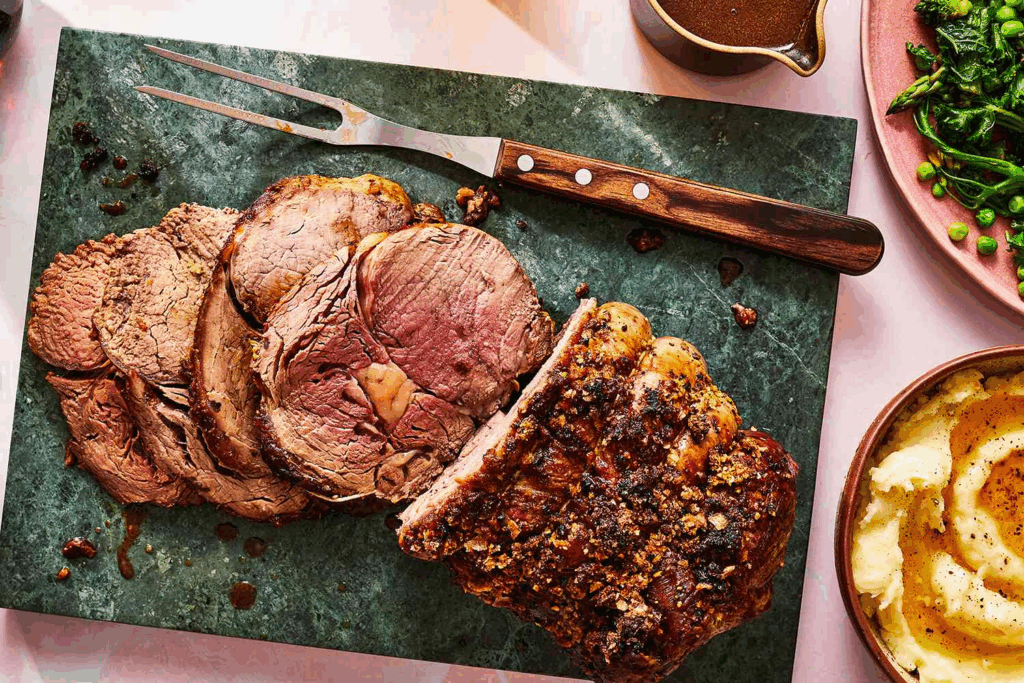
Temperature Guide and Doneness Table for Ribeye
Precision makes the difference between average and exceptional. I never guess doneness—I measure. Below is the internal temperature table I use in my kitchens for ribeye:
| Doneness | Pull Temp | Rest Temp Goal | Notes from Chef |
| Rare | 120°F (49°C) | 125°F (52°C) | Cool red center, very soft; not ideal for thick ribeye |
| Medium-Rare | 125°F (52°C) | 130–135°F (54–57°C) | Best for fat rendering and cap flavor; my personal favorite |
| Medium | 130°F (54°C) | 140°F (60°C) | Slight pink center; still juicy but firmer |
| Medium-Well | 140°F (60°C) | 145–150°F (63–66°C) | Less juicy, crust may harden |
| Well Done | 150°F+ | 160°F+ | Not recommended; fat melts out, texture tightens |
Surface temp for searing: 400–450°F (204–232°C)
Oven temp for finish: 375°F (190°C)
I insert the thermometer horizontally into the thickest part of the eye, avoiding fat pockets and bone. I never cook ribeye past 140°F unless requested—it loses its lush character and turns grainy.
Reverse Sear for Ribeye: Maximum Control
Reverse searing gives me unmatched control over doneness and texture—especially with thick cuts. I start by placing the seasoned steak on a wire rack over a sheet tray, then roast in a low oven at 225°F (107°C) until the internal temp reaches 115–120°F.
At that point, I rest the steak for 10 minutes while I preheat a cast-iron pan or grill to high heat. Then I sear both sides for about 45 seconds per side—just enough to create a crust without cooking the interior further.
This method prevents the outer layers from overcooking and gives me a deep, uniform pink from edge to edge. The cap renders evenly, and the center stays buttery soft. I recommend this technique to anyone who wants consistent results without the stress of rapid searing.
It’s slower but nearly foolproof, and it works incredibly well for steaks pulled directly from the fridge. You just need time and a thermometer—but the payoff is worth it.
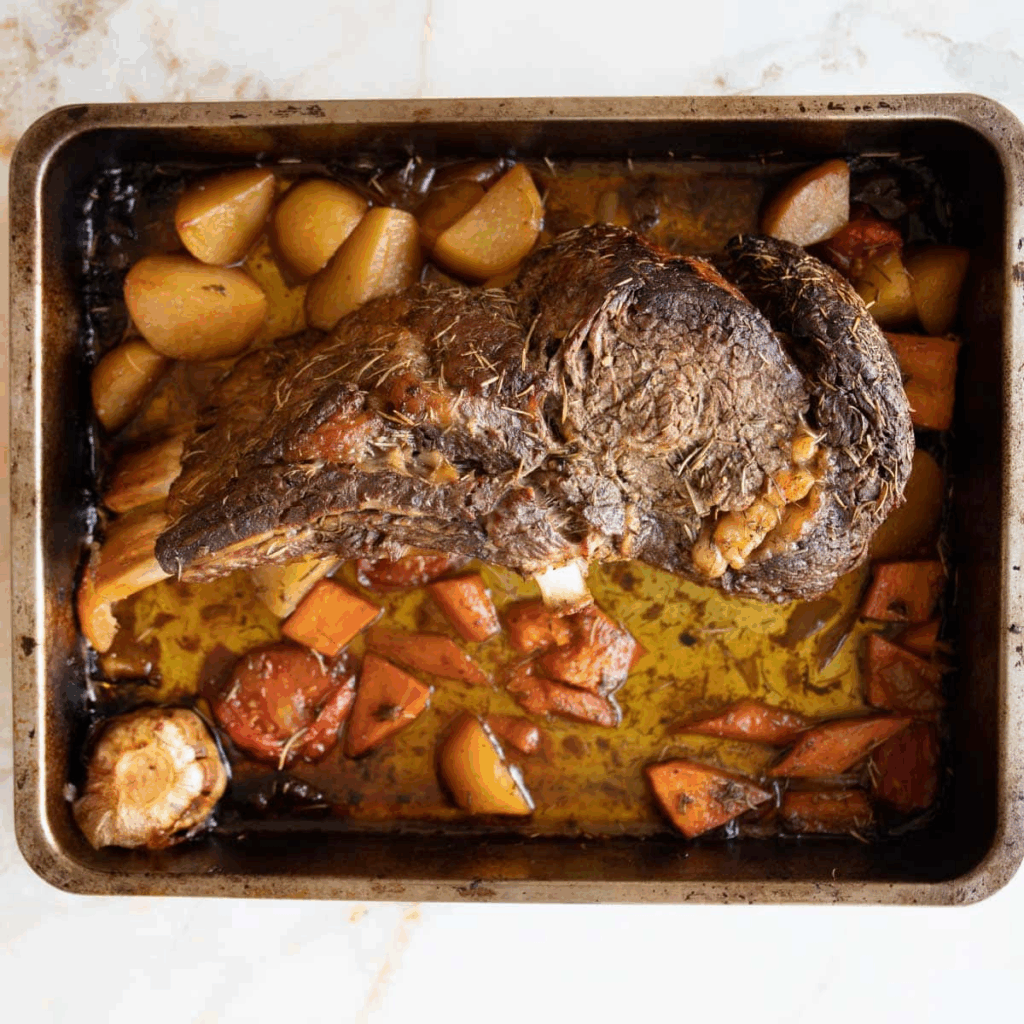
Sous Vide Ribeye for Precision and Ease
Sous vide takes the guesswork out of cooking ribeye and guarantees medium-rare results every time. I season the steak, seal it in a vacuum bag with rosemary and a pat of butter, and cook it in a water bath set to 129°F (54°C) for 1 to 3 hours.
The temperature never exceeds the medium-rare zone, so it’s impossible to overcook. Once done, I remove it from the bag, pat it dry thoroughly, and give it a hard sear in a cast iron pan with a bit of oil—about 1 minute per side.
This combination delivers the best of both worlds: perfect doneness inside and crusty exterior with minimal effort. I often use sous vide when I’m preparing multiple ribeyes for a dinner party or prepping ahead for service. It frees up stove space and ensures every steak is just right, even if I’m juggling five other things in the kitchen.
Pressure Cooker and Microwave Ribeye Options
These aren’t my preferred tools for ribeye—but I’ve worked in enough tight kitchens to know sometimes you’re stuck with what you’ve got. In emergencies or limited setups, I’ve cooked ribeye in both a pressure cooker and microwave with mixed but manageable results.
For a pressure cooker, I avoid it unless I’m turning the ribeye into shredded meat for tacos or stew. The moist environment and high pressure break down connective tissue quickly, but they also eliminate the steak’s signature texture. I once tested a ribeye at high pressure for 10 minutes with broth and aromatics—flavorful, but it came out more like pot roast.
In the microwave, I’ve gently reheated rare ribeye leftovers by covering them with a damp paper towel and heating at 30–40% power in 15-second bursts. But cooking from raw? Only as a last resort. You can make it work by cooking on medium power with careful flipping and thermometer checks, but expect uneven doneness and no crust.
My advice? Use either method only when absolutely necessary. They won’t showcase what makes ribeye great—but they can prevent food waste or salvage a meal.
Common Mistakes When Cooking Ribeye
Even experienced cooks slip up with ribeye. One of the biggest mistakes I see is underestimating the fat content. Ribeye carries a lot of marbling, and if you don’t allow time for that fat to render, it’ll come out chewy instead of melting into the meat. I always cook a little slower and give the fat edges a full sear.
Another misstep is not drying the surface enough before cooking. If there’s moisture, you’ll steam instead of sear—and ribeye needs that caramelized crust to balance its richness. I pat mine dry right before seasoning.
Overflipping is a frequent issue. You want to build a crust without disturbing the meat too early. I leave it undisturbed for a solid 2–3 minutes before flipping, only once per side unless finishing with butter.
Lastly, skipping the rest period is a crime against ribeye. The fat and juices need to settle. I’ve served rushed steaks in the past, and the flavor loss was noticeable—now I always give 10 minutes minimum for rest.
Sauces and Butters for Ribeye Steak
Ribeye’s natural richness begs for contrast or amplification—depending on your mood. I often go with a red wine pan sauce, built right in the skillet after cooking. I deglaze with wine, add beef stock and thyme, reduce by half, then swirl in cold butter for gloss. It’s bold but still lets the meat lead.
For something simpler, I use compound butter. My go-to is garlic-parsley-shallot butter with a pinch of salt and lemon zest. I let a thin slice melt over the hot steak while it rests. It adds aroma and visual appeal without masking the beef.
When I want something fresher, I reach for chimichurri—especially with grilled ribeye. The acidity from vinegar and raw garlic cuts through the fattiness and creates balance.
On occasion, I also use horseradish crème, balsamic glaze, or even a blue cheese butter for more aggressive flavor pairings. But I always taste the steak first—sometimes it’s so good, I skip the sauce altogether.
Best Seasoning Approaches for Ribeye
Ribeye needs less help than most cuts, but that doesn’t mean seasoning isn’t critical. At the very least, I coat it liberally with kosher salt and cracked black pepper about 30–40 minutes before cooking. This gives salt time to pull moisture to the surface, dissolve, and begin dry-brining the meat.
If I want more flavor, I use a dry rub built from paprika, garlic powder, dried thyme, and coriander. I avoid sugar-based blends—they burn too easily with high-heat cooking.
When grilling, I often brush ribeye with a light layer of Dijon mustard just before seasoning. It helps the crust develop and adds subtle tang that works with smoke.
I don’t marinate ribeye unless I’m dealing with lower-quality meat, in which case I’ll use a soy-based marinade with sesame, ginger, and garlic—but only for 15–20 minutes. Otherwise, the acid will start breaking down the fat and ruin the texture.
Recipe Variations Using Ribeye
Ribeye doesn’t just belong on a white plate next to mashed potatoes. I’ve used it in countless ways—each one maximizing its flavor and fat. One of my favorites is slicing a medium-rare ribeye into thin strips for tacos, layered with chimichurri, grilled scallions, and avocado crema.
I also love it in steak salads, especially over arugula with shaved Parmesan, cherry tomatoes, and mustard vinaigrette. The richness balances the greens and acidity beautifully.
For something cozy, I’ve turned leftover ribeye into a beef and egg rice bowl, with soy glaze, pickled onions, and a soft-boiled egg. The steak reheats perfectly if sliced and kissed in a hot skillet for 30 seconds.
Even open-faced sandwiches with horseradish aioli and grilled onions elevate a work lunch into something special. Ribeye’s structure means it stays tender across multiple formats—and that’s why I always cook one more than I need.
Serving and Plating Ribeye Like a Pro
Serving ribeye well means respecting the meat. Once it’s cooked and rested, I always take a moment to assess the grain direction—especially with bone-in cuts. I slice against the grain to ensure tenderness and a cleaner bite. For boneless ribeye, I’ll often slice it on a slight bias into thick strips, about ½ inch wide. This makes for beautiful fanned presentation on the plate.
If I’m plating for a formal meal, I keep it clean. A generous spoon of pan sauce or a dollop of compound butter off to the side adds refinement without covering the crust. For sides, I pair ribeye with something textural: crispy potatoes, grilled vegetables, or purees that complement without overwhelming.
I like to plate the steak last, once all sides and garnishes are ready. This minimizes temperature loss. A small sprinkle of flaky salt across the top just before serving adds crunch and finishes the flavor profile. And if I’m serving it whole, I include a steak knife with some heft—presentation isn’t just about the plate, it’s also about the experience of eating it.
FAQ: 15 Questions About Cooking Ribeye — Answered by a Chef
What’s the best doneness for ribeye?
I always recommend medium-rare. At 130–135°F, the fat renders properly, the meat stays juicy, and the marbling delivers full flavor. I’ve cooked it every which way, but medium-rare remains the most consistent and enjoyable.
Should I trim the fat off before cooking?
No. I leave the fat cap intact for cooking—it bastes the meat and enhances flavor. After resting, you can trim if desired. I usually eat around it, but some guests love those crispy edges.
How long should I rest ribeye after cooking?
At least 10 minutes. Thicker cuts may benefit from 12–15. I tent the steak loosely with foil and let the juices redistribute—it makes a huge difference in tenderness and moisture.
Can I grill ribeye instead of using a skillet?
Absolutely. I use a two-zone fire: sear directly over high heat, then finish over indirect. Grilling adds smoky character and works especially well for bone-in cuts.
Why does my ribeye turn gray instead of brown?
Usually it’s excess moisture. Pat the steak dry before cooking and make sure the pan is hot enough. Moisture leads to steaming—not searing.
Is it better to buy bone-in or boneless ribeye?
Both are excellent. Bone-in adds presentation and slows cooking slightly for juicier results. Boneless cooks faster and is easier to slice. I use both depending on the occasion.
Can I marinate ribeye?
You can, but I rarely do. Ribeye is already rich and flavorful. If I marinate, it’s for a short time—20 minutes max—with something mild like olive oil, herbs, and garlic.
How thick should a ribeye be for pan cooking?
I recommend 1¼ to 1½ inches. Thinner cuts cook too quickly and don’t allow for proper crust development. Thicker steaks also rest better and retain heat longer.
Can I cook ribeye from frozen?
Yes, but only with reverse sear or sous vide. I’ve reverse-seared frozen steaks straight from the freezer—start low in the oven, then finish with a hot sear. Not perfect, but it works.
What oil is best for cooking ribeye?
I use grapeseed or avocado oil. High smoke point is essential. Butter is great for basting but burns too fast for searing.
Can I use ribeye for stir-fry or tacos?
Yes. I cook it medium-rare, then let it rest and slice thin. It works beautifully in tacos, rice bowls, or cold steak salads. I always reheat gently to preserve texture.
What sides go best with ribeye?
I love pairing it with crispy potatoes, grilled asparagus, creamed spinach, or roasted carrots. Anything starchy or green works well to balance the richness.
What’s the ideal internal temperature for medium ribeye?
Pull at 130°F and rest to reach 140°F. It’ll be pink in the center but firmer than medium-rare. I don’t go beyond that unless specially requested.
Can I use ribeye for steak tartare or raw dishes?
Technically yes—but I prefer leaner cuts like tenderloin for tartare. Ribeye has too much fat and connective tissue to chop raw cleanly. I keep ribeye for cooked applications.
What’s your personal favorite way to cook ribeye?
Reverse sear in the oven, followed by a hard cast-iron finish with rosemary butter. Thick, bone-in, medium-rare. Served with potatoes cooked in the steak’s fat. It’s unbeatable.



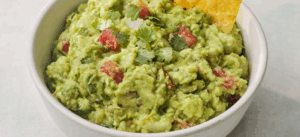
Post Comment